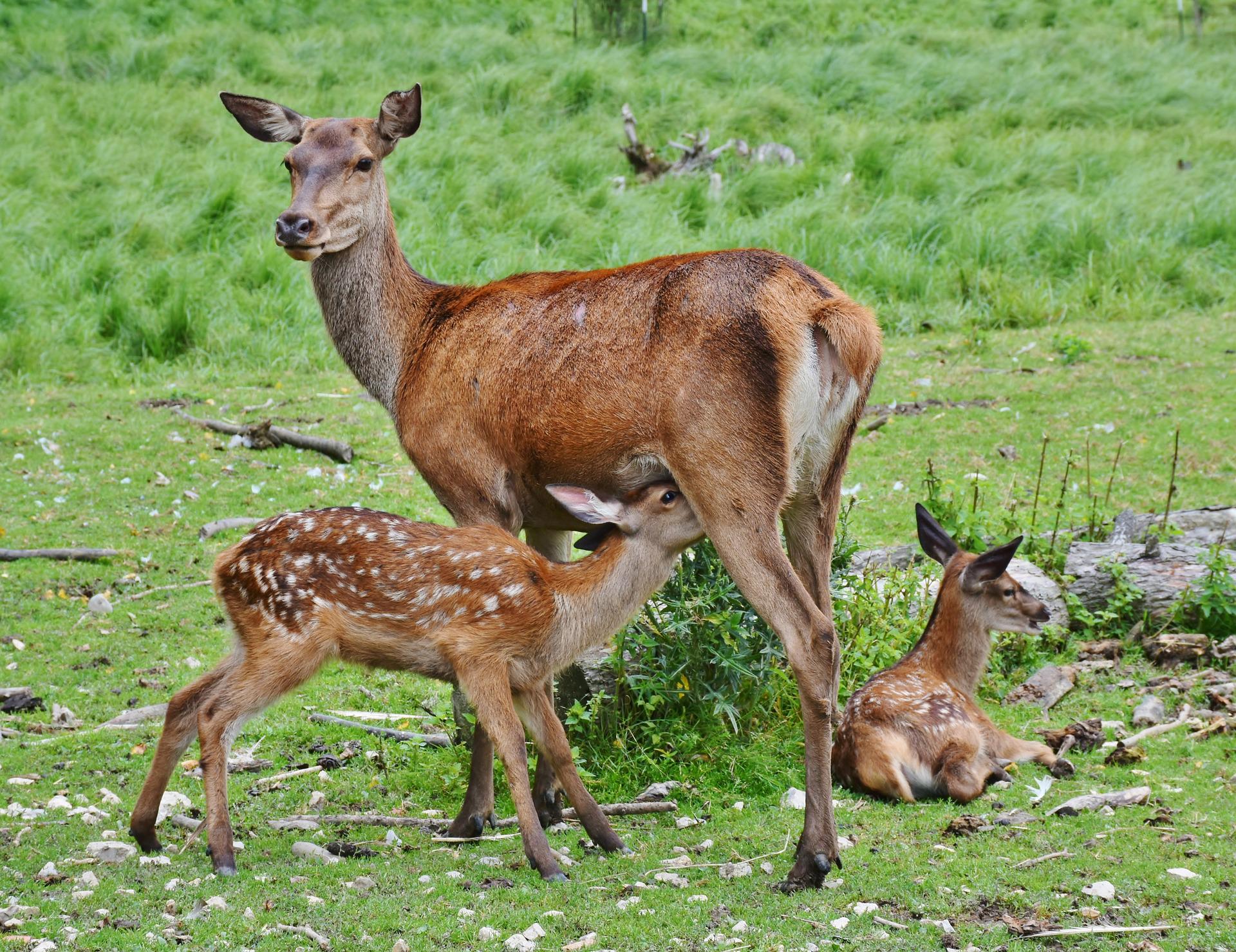Ideas for blog posts can come from anywhere. Inspiration has struck Duane and I on vacation, in the car, on a run, in conversation, and of course while looking at trail camera photos. My latest inspiration came from a google search. I was looking for pictures of a deer brain. Yup – several years ago Twitter was abuzz with #ScientistorSerialkiller tweets. The similarities are a bit creepy. Anyway…
This appeared in the search results: Deer study shows bigger brains in females lead to longer lives and more offspring.

Society, middle age, and my chosen profession has made me a raging feminist. So reading this title brought me great joy. Especially knowing that female ungulates NEVER get the attention they deserve.
The research was conducted as part of the Isle of Rum Red Deer Project, one of the longest scientific studies of a wild population in the world, which began in 1953. The island is located off the coast of Scotland. Research on Rum deer has produced hundreds of scientific papers and 3 books!
Brain size has been studied a lot as part of our never-ending quest to prove that big brained creatures are “smarter.” Carnivores are a favorite group in the arena. Research looking into the problem-solving ability of 39 species of carnivores showed that species with larger brains (relative to body mass) were more successful in solving puzzle boxes.
Brain size has been equated to reproductive strategies. Female carnivores that provided sole parental care have larger brains than those of biparental or communal care. Single moms = larger brains. The same does not hold true for males. Differences in parental care were not associated with variation in male brain size.

But back to the big brained females of Rum. Generally speaking, bigger brains in mammals are associated with increased longevity and decreased fecundity. Think elephants – long lived with low reproductive output capacity. Compared to say rabbits – short lived with high reproductive output capacity.
But what about within a species? Is there a relationship between brain size and reproductive success?
Yes, at least for red deer on the Isle of Rum.
First, they found the brain size is heritable. If mom had a big brain, baby would too.
Second, for females, brain size was positively correlated with longevity AND reproductive success. But not maximum reproductive output (fecundity), which makes sense. Animals in the same population in the same environment can’t change their physiology.
For males, brain size was not related to longevity, lifetime breeding success, or fecundity.
Female red deer with bigger brains lived longer than those with smaller brains and had more reproductive years. And while there was no difference in juvenile survival, since females with bigger brains produced more offspring, their lifetime reproductive success was higher because of volume.
While there is rum in Pennsylvania, there are no red deer. But there are white(tailed) ones. And while googling deer brain does produce some nice photos, it doesn’t tell you anything about how it might relate to sex, longevity, or reproduction.
Truth is there isn’t much research on intraspecies brain size in deer or any species really. One study did show that female hierarchy during times of food abundance was related to body mass and not age or testosterone levels. Larger bodies do equal bigger brains but to know if those females actually had bigger brains compared to others, standardizing for body mass needs to occur.
No matter. Big brain female red deer on the Isle of Rum in Scotland live longer and are more successful. That’s all I need to know and until someone proves different, I’ll be applying this to all species.
-Jeannine Fleegle
Wildlife Biologist and Champion of Females of Any Species
PA Game Commission